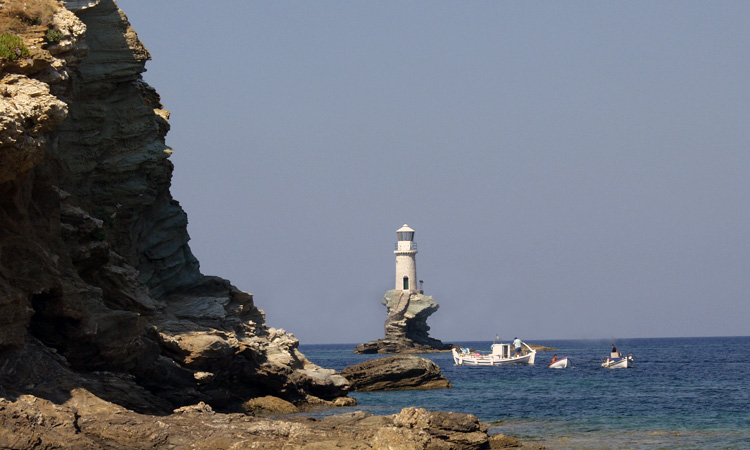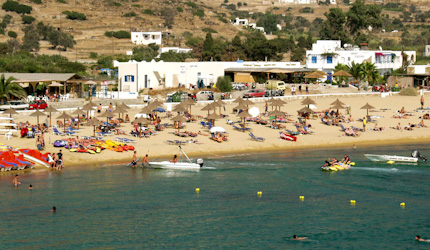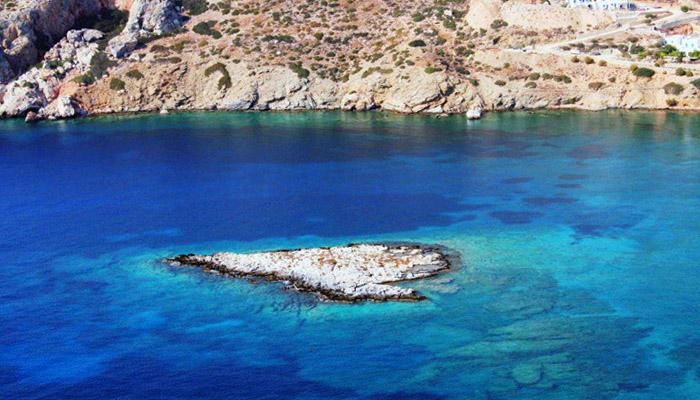Kythnos was a very important supplier of raw materials of metallurgy since the first Cycladic period in Bronze Age, as the findings on the island suggest. In antiquity, Kythnos lived in a notably harmony as Aristotle’s citation of Kythnos Constitution imply. Unfortunately, Aristotle’s writings about the island are lost. In the 12th century, Kythnos fells under Venetians for 400 years and then under Ottomans since the Greek Revolution in 1821. Today is a popular destination with many vacation homes of Greeks, attracting also foreign visitors.
Kythnos spans an area of 100,2 sq. km. with a total population of 1.608 residents. The islands closer to Kythnos are Kea (or Tzia) on the north, Syros on the east and Serifos on the south.
Kythnos has been famous of its natural thermal springs and used to be a very popular spa resort in antiquity because of the curative properties of the water. The bathhouse is still functioning in the area of Loutra (meaning baths in Greek) charging the visitors a modest fee for soaking into the healing waters.
The Katafiki Cave in Dryopida settlement is one of the largest caves in Greece. Its name means refuge in Greek, and it was used as one by the residents of Kythnos Island, in order to survive invasions to the island. The cave has many interesting rock formations which are called rock curtains. At the end of the 19th century iron ore was found in the cave and was mined for 30 years till the first decades of the 20th century. Today, the cave is open for visitors and is the main tourist sight on the island.



































 Air tickets
Air tickets Rent a car
Rent a car





